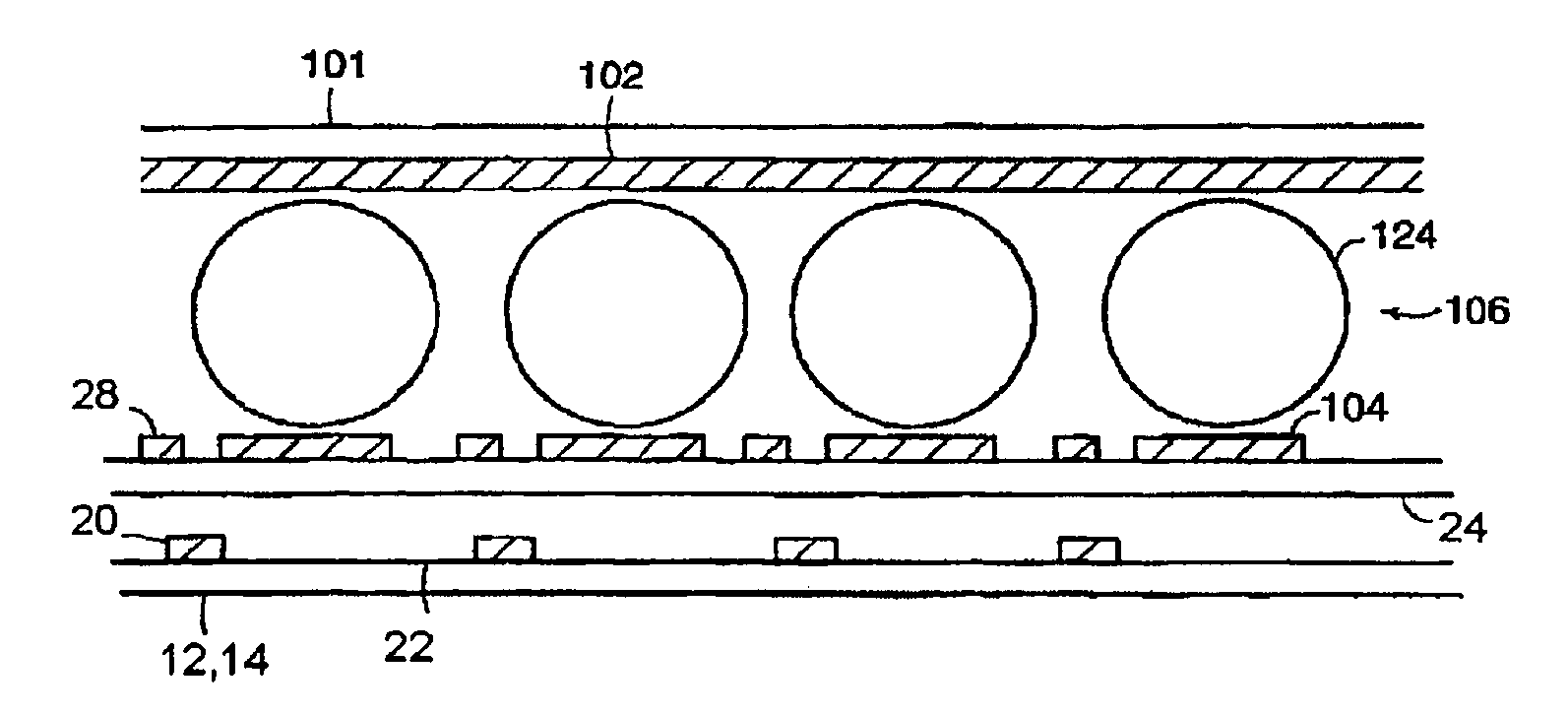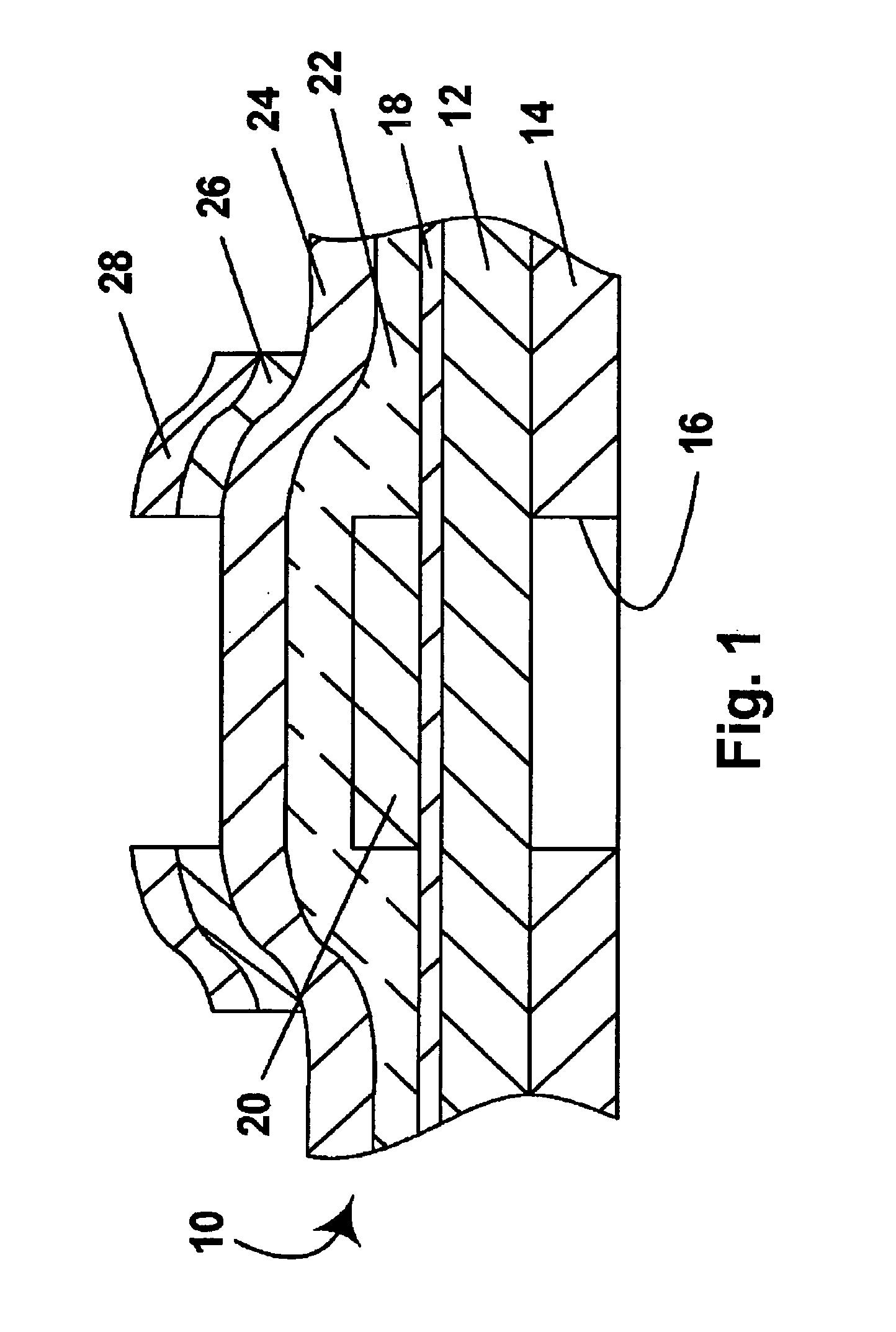Process for fabricating thin film transistors
a thin film transistor and fabrication process technology, applied in transistors, semiconductor devices, electrical equipment, etc., can solve the problems of less satisfactory amorphous silicon semiconductor layer, substrate swelling, and temperature which can be employed
- Summary
- Abstract
- Description
- Claims
- Application Information
AI Technical Summary
Benefits of technology
Problems solved by technology
Method used
Image
Examples
Embodiment Construction
[0011]Preferred polyphenylene polyimides for use in the present process are those sold commercially under the trade names Upilex-S and Upilex-VT by UBE America, Inc., 55 East 59th Street, 18th Floor, New York N.Y. 10022. Both these materials are stated by the manufacturer to be of the formula:
[0012]
in which R is an alkylene group. These polyimides are derivatives of biphenyl-3,3′,4,4′-tetracarboxylic acid and an α,ω-alkanediamine, for example 1,6-hexamethylene diamine (formally hexane-1,6-diamine). The main difference between the two materials is that Upilex-S is a simple polyimide film, while Upilex-VT is surface-treated on one face to facilitate hot lamination of the film, without adhesive, to ceramics or metal foils. For purposes of the present invention, the Upilex VT may be laminated to a stainless steel backing film. Another preferred polyimide for use in the present process is Upilex-50SS, from the same manufacturer.
[0013]Polyphenylene polyimides have glass transition tempera...
PUM
| Property | Measurement | Unit |
|---|---|---|
| thickness | aaaaa | aaaaa |
| glass transition temperature | aaaaa | aaaaa |
| temperatures | aaaaa | aaaaa |
Abstract
Description
Claims
Application Information
 Login to View More
Login to View More - R&D
- Intellectual Property
- Life Sciences
- Materials
- Tech Scout
- Unparalleled Data Quality
- Higher Quality Content
- 60% Fewer Hallucinations
Browse by: Latest US Patents, China's latest patents, Technical Efficacy Thesaurus, Application Domain, Technology Topic, Popular Technical Reports.
© 2025 PatSnap. All rights reserved.Legal|Privacy policy|Modern Slavery Act Transparency Statement|Sitemap|About US| Contact US: help@patsnap.com



